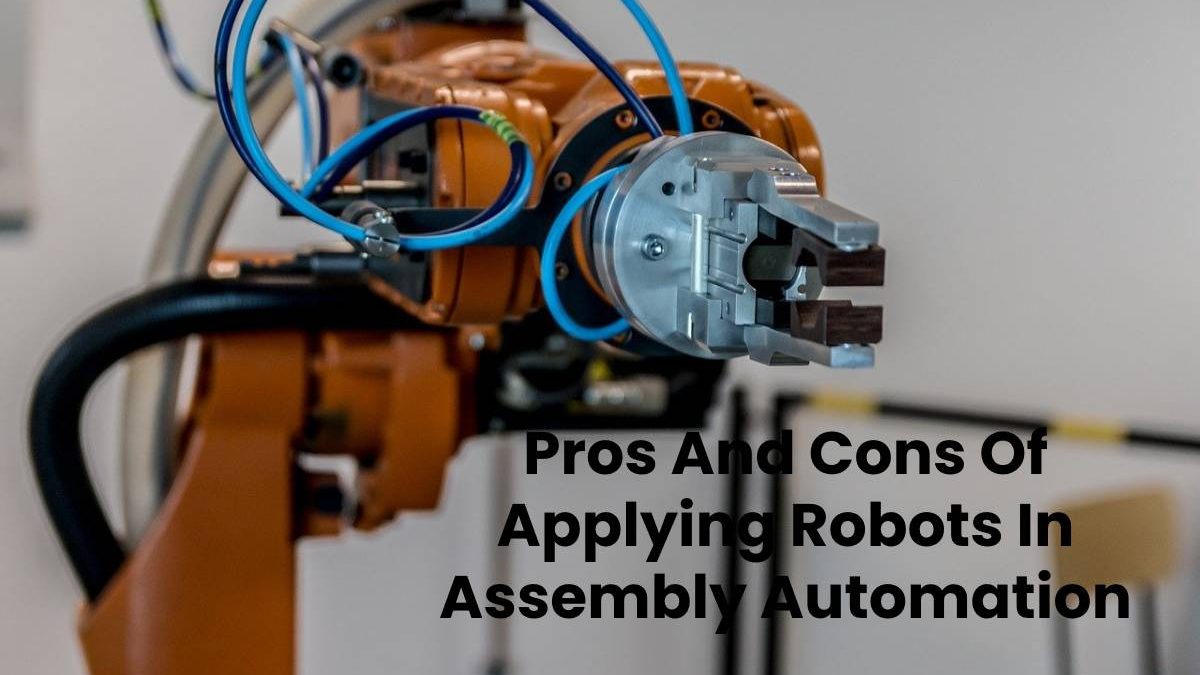Applying Robots In Assembly Automation
Robotic automation has growing popularity across many industries worldwide, with many corporations taking advantage of the benefits that come with installing robotics at their workplaces. On the other hand, Robot manufacturing companies make it even more convenient by delivering improved and smarter robotics that come with smaller footprints.
Even though many of the larger manufacturing industries use assembly robots for almost all their applications, some organizations have concerns about deploying them. The organizations that display cautiousness when it comes to assembly robot deployment still use traditional production methods and are yet to try the technology.
Others fear that deploying robotic automation will render human labor obsolete. While their objections are varied, it is always good to look at both sides of the coin. Do the benefits of deploying automation assembly robots outweigh the disadvantages or are there too many limits for some organizations to bear? Read on to find out.
Table of Contents
Pros of Using Assembly Robot Automation
Increased Productivity
One of the main advantages of using robotic automation is increased productivity. Unlike humans, robots take over repetitive tasks without tiring or taking breaks. Taking complete control of the repetitive tasks also allows the staff members to take a breather and increase their energy levels to focus more on product improvement. Improved products lead to satisfied clients and more sales. Staff members can also extend their skills to other sections of the organization.
Cost-Effective
Installing robots at a workplace does not come cheap. However, robots increase production at much lower costs, enabling the corporations to recover their initial investment capital within a very short time. Moreover, unlike humans, robots work nonstop and take on repetitive tasks without shift time, breaks, sick leaves, or holidays.
Handles hazardous and dangerous environments better
Accidents are common features at the workplace, especially in industries with dangerous and stable environments. Injured staff members take time off to recuperate, which costs the business money. Using automated robots minimizes potential accidents to the staff and other machines.
Furthermore, they can handle chemicals, heavy machinery, high heights, low and high temperatures without breaking down or slowing down. Besides removing the unnecessary risks humans face on the manufacturing floor, automated assembly robots also minimize material waste.
Better Quality Assurance
Lapse of concentration due to fatigue can lead to errors and a decline in product quality, leading to costly consequences for the organization. Robotic automation is accurate and precise, which means you will rarely get any errors. They meet all the required quality standards with perfect success, providing the business with better possibilities that include possible expansion.
Disadvantages of Using Assembly Robot Automation
Human Job Losses
The biggest threat of deploying robotics is the potential of humans losing their jobs. The concern is that robots perform with more speed, consistency, flexibility, accuracy, and immunity to accidents on the workstation.
However, the concerns are not as accurate as people say because research shows that the employment rate does not go down with robot deployment. The opposite is what happens because, after all, robots do need humans for programming and their periodical maintenance.
High Investment Costs
Another obstacle facing industries, especially small-scale businesses, is the initial investment costs of deploying robotics. It is important to consider several other factors before investing in robot automation.
Even though the recovery of the investment occurs within a short period, one should ensure that the company is stable enough and has a sustainable cash flow during the period the robots make a breakthrough with the investment cost recovery. The organization also needs to consider the intangible benefits expected from investing in the deployment.
Skilled Labor/Training Costs
Deploying robotic automation also means that you will need skilled labor for specialized roles. You can choose to hire new employees or provide training for the existing ones. Hiring or training skilled labor leads to more costs.
Wrapping it up
Deployment of automated assembly robots is a huge step for many industries. Robots are more consistent, accurate, flexible, and do repetitive tasks requiring breaks. However, machines need programming to do what they do, and they have their advantages and disadvantages. The benefits outweigh the limits, and with the new crop of collaborative robots in the market, delivery gets better.

